The flavor of Costa Rican coffee beans describes the taste characteristics of Central American coffee beans.
Professional coffee knowledge exchange more coffee bean information please follow the coffee workshop (Wechat official account cafe_style)
When it comes to Latin American coffee, Qianjie believes that all coffee fans will praise Costa Rican coffee, which is famous for its high sweetness, thorough acidity and well-balanced taste.
Costa Rican coffee is produced in the Republic of Costa Rica (The Republic of Costa Rica) in the south of Central America. Its quality is similar to that of Colombian coffee and is suitable for blending mixed coffee.
Coffee was introduced into Costa Rica from Cuba in 1729. Today, its coffee industry is one of the well-organized industries in the world, with a yield of 1700 kg per hectare. Costa Rica has only 3.5 million people but 400m coffee trees, and coffee exports account for 25 per cent of the country's total exports. Costa Rica's volcanic soil is very fertile and well drained, especially in the central plateau CentralPlateau, where the soil consists of successive layers of ash and dust. According to Qianjie, Costa Rica is also the first country in Central America to grow coffee because of its commercial value. Coffee is the country's main export.
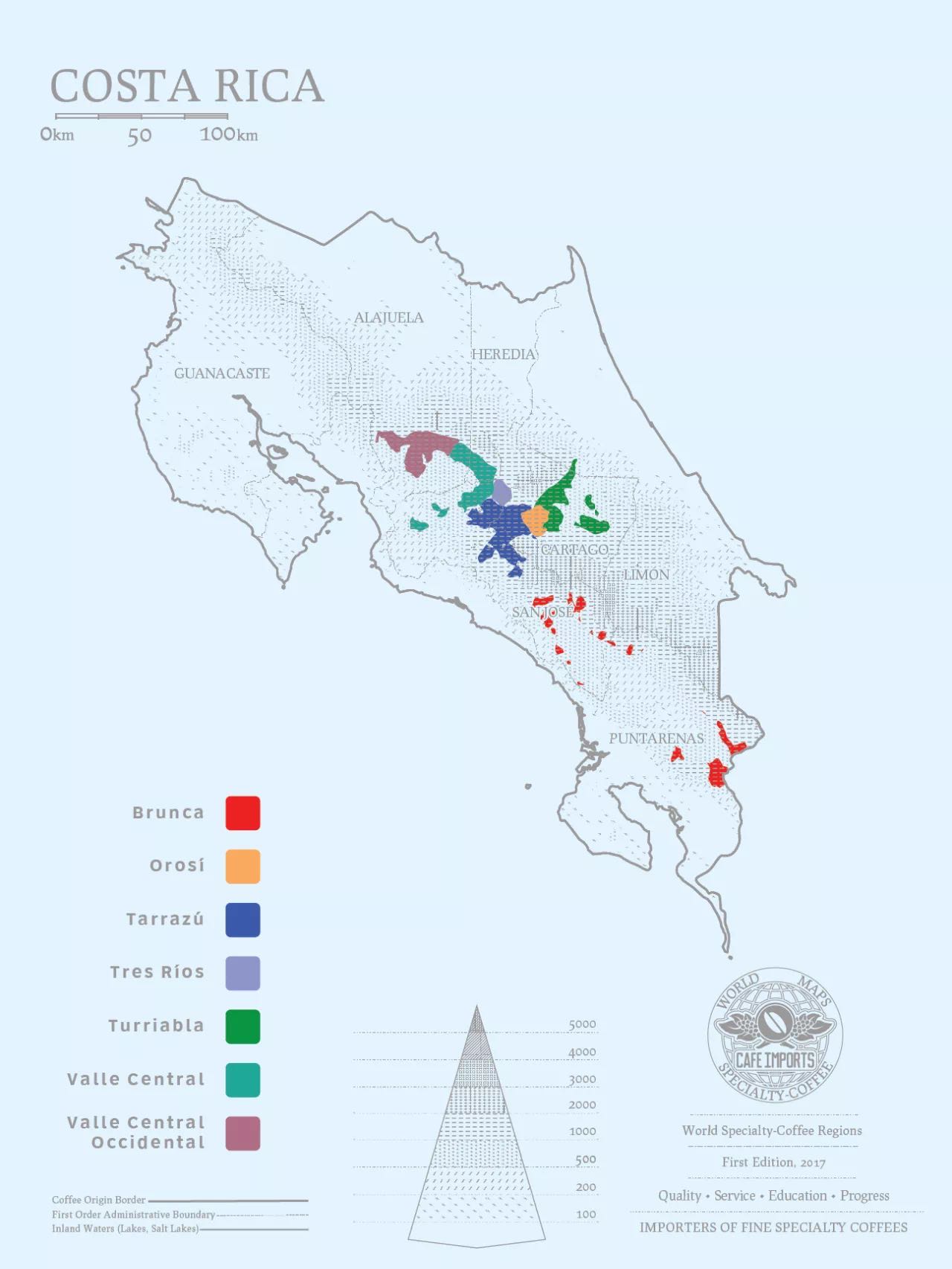
According to Qianjie inquiries, Costa Rica was originally the same as other Central American countries, mainly growing bourbon and iron pickup varieties of high-quality coffee, but since the 1960s, large-scale manors and cooperatives as well as international coffee enterprises have moved in on a large scale, while small and medium-sized manufacturers choose to take their own coffee cherries to these large-scale processing plants with sound equipment in exchange for money. So Costa Rica has always been able to maintain the production of high-quality coffee beans.
Since 1990, however, the international price of coffee has been depressed and coffee production in Costa Rica has plummeted, which has led to fierce competition between cooperatives and large enterprises, resulting in the bubbling of coffee cherries in Costa Rica, which has led to the collapse of many cooperatives one after another.
Fortunately, demand for boutique coffee increased in the late 1990s, and in view of past experience, Costa Rica specializes in dealing with coffee cherries grown by relatives or nearby estates, which is called a "microprocessing plant", that is, a small-scale processing plant. These treatment plants deal with coffee beans in a field at a time, so that some of the microclimate, soil and variety differences in each manor will be quite complete, resulting in a special flavor of high-quality Costa Rican coffee.
Costa Rica has eight major coffee producing areas, namely: Valley Central Occidental in the western valley, Valley Central in the central valley, Tarrazu in Tarazu, Tres Rios in Sanshui, Orosi in Europe, Brunca in Brenka, and Turrialba in Duli Alba.
Tarrazu (Tarazhu): coffee is planted at an altitude of 1300-2000m.
Tres Rios (Sanshui River): coffee is planted at an altitude of 1400-1800m.
Valley Central Occidental (Western Valley): coffee is planted at an altitude of 1200-1650m.
Valley Central (Central Valley): coffee is grown at an altitude of 1200-1600m.
Orosi (Eurosi): coffee is grown at an altitude of 900-1200 m.
Brunca (Bronka): coffee is grown at an altitude of 800-1200m.
Turrialba (Duli Alba): coffee is grown at an altitude of 600-900m.
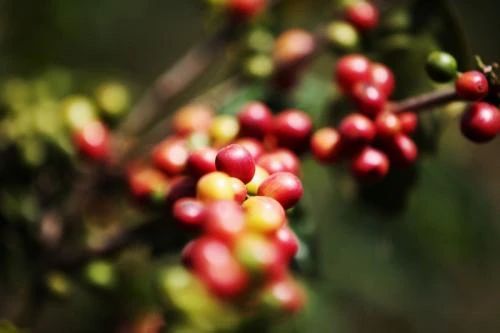
Among them, Tarazhu coffee cherry is the best, so most of the beans introduced in Qianjie come from Tarazhu, because the Tarazhu producing area has the highest average latitude and excellent climate and soil conditions. as a result, Tarazhu is the most famous and generally recognized coffee-producing area in Costa Rica. Among them, Sanshui River (Tres Rios) is a famous small producing area in Tarazhu producing area.
Qianjie also learned that the main varieties of Costa Rican coffee are bourbon, Kaddura, Kaduai, Vera Saatchi, Villalobos and so on.
Next, in front of the street, for coffee fans, popular science, what's the difference between these coffee varieties?
Bourbon
Bourbon is a variant of the early iron pickup that was transplanted to Yemen, and the bean shape has changed from a thin tip to a round body. Bourbon was not named until 1715 after France transplanted round beans from Yemeni mocha to the island of Bourbon on the east coast of Africa (renamed Reunion after the French Revolution). Bourbon beans were then transferred to Brazil and Central and South America from 1727, and from the United Kingdom to the island of St. Helena (where Napoleon was later imprisoned) in 1732. At the same time, bourbon is also the winner of the American boutique coffee cup test.
Kaddura
Kaddura, a natural variety of Arabica Bourbon, was discovered in Brazil in 1937. Its tree is not as tall as bourbon, but smaller.
Due to inheriting the blood of bourbon, the disease resistance is relatively weak, but the yield is higher than that of bourbon. Although it was found in Brazil, Kaddura is not suitable for growing in Brazil, so it is not planted on a large scale in Brazil, but is widely planted in Central and South America, such as Colombia, Costa Rica and Nicaragua.
Kaduai
Kaduai is a hybrid of New World and Kaddura. It not only inherits the advantage of the low body of Kaddura tree, but also makes up for the defect of Kaddura's weak fruit without the wind. The result is solid and not easy to fall when the strong wind blows. The biggest regret is that its overall flavor is slightly more monotonous than Kadura. Kaduai also has the difference between red fruit and yellow fruit, and red fruit has a better flavor than yellow fruit.
Vera Saatchi
Vera Saatchi is a bourbon variety, this bourbon green-topped dwarf natural mutant was discovered in Costa Rica in 1950, followed by pedigree selection (through successive generations of selection of a single plant), but this variety was not widely cultivated in Costa Rica, but was introduced to Honduras by the Honduran Coffee Institute (IHCAFE) in 1974. It is a very complex coffee in smell, suitable for medium and deep roasting, and the ground dry aroma with perfume, nectar and cherry aromas, mixed with cinnamon-like sweet spices.
Vera Loeb.
Vera Lopper, born in Costa Rica, is a variant of the iron pickup, with branches and trunks at an angle of 60 degrees, with bronze leaves. This kind of growth is particularly good at high elevations, and strong wind resistance, can also grow in barren soil, it will be better to grow under shade trees. The most striking feature of the taste is its excellent sweetness and beautiful acidity.
Costa Rican beans are also graded, while Qianjie is known to be classified by altitude, which is SHB,GHB,HB, which is distinguished as follows:
SHB: very hard beans grow at 1500 meters above sea level.
GHB: you hard beans grow at 1100-1200 meters.
HB: hard beans grow at 1000 meters.
High-quality Costa Rican coffee is called "extra hard beans". According to Qianjie, this kind of coffee can grow at an altitude of more than 1500 meters. Experienced coffee fans know that the higher the altitude, the better the quality of coffee beans, not only because higher altitude can increase the acidity of coffee beans and thus increase the flavor, but also because the night temperature at high altitude is low, which can make trees grow slowly. as a result, the flavor of caffeine beans is stronger.
According to Qianjie, we know that the treatment of Costa Rican coffee cherries is not only the common sun and washing treatment, but also honey treatment.
Honey treatment, called HoneyProcess or Miel Process, is called Honey Coffee. It is used in coffee gardens in Costa Rica, Panama, Guatemala and other countries, and Costa Rica is better known. The so-called honey treatment refers to the process of making raw beans with mucous membrane (also known as pectin) for sun-drying. After the outer pulp of the coffee bean is removed, there will be a layer of sticky jelly (pectin). The traditional washing method washes it away with clean water, but this direct drying method has been born because of the limitations of water resources in some high-altitude areas.
Qianjie believes that the taste of honey treatment is different from that of water washing: higher sweetness, higher sugar content and higher alcohol thickness than water washing.
Costa Rican honey-treated coffee beans retain the cleanliness of the water treatment, although the brightness of the coffee has decreased, but increased sweetness and caramel taste. According to the different degree of honey treatment, it can be divided into yellow honey treatment, red honey treatment and black honey treatment.
Then what is the difference between these honey treatments? I'll tell you on the front street!
Yellow honey: about 40% of the pectin is removed; the drying method requires the most direct heat absorption, receives the most light drying, and lasts for about 8 days to reach a stable water content.
Red honey: about 25% of the pectin is removed; it takes longer to dry than yellow honey, and reduces direct exposure to sunlight, even in shading sheds, lasting about 12 days.
Black honey: retain close to 80% pectin; dry for the longest time, lasting at least 2 weeks, with a cover to avoid too strong sunlight, prevent drying too fast, and make sugar conversion more fully.
The advantage of honey treatment is that it can best preserve the original sweet flavor of coffee ripe fruit, making the coffee show elegant black sugar flavor and drupe flavor, while the berry flavor also stimulates the basic aroma of red wine, which is considered to be a very elegant product.
The biggest difference between honey treatment and Brazilian semi-washing is that the former does not drip water, because be sure to choose flawless red fruit, pectin is sweet. The honey-treated pectin planer is more demanding, and the thickness of the pectin planing must be precisely controlled, just like the bean grinder.
But the failed honey-treated coffee will have a strong defective sun flavor, similar to the rough sun-cured onion, durian, bean curd and, more seriously, alcohol potions. Normal honey-treated coffee has a mild sour taste, and it is not good if it is sour enough to pout.

A brief summary:
Sweetness: black honey > red honey > yellow honey
Cleanliness: yellow honey > red honey > black honey
Sense of balance: red honey = yellow honey > black honey
Next, we will introduce a kind of raisin anaerobic honey treatment which is only found in Costa Rica.
There must be coffee fans who ask Qianjie what's the difference between it and ordinary honey treatment?
In fact, the coffee fruit is dried into a raisin state, and then peeled honey treatment fermentation, in the flavor will be more intense fermentation flavor, and pectin preservation is higher than other honey treatment, known as 100% pectin honey treatment, it really has raisin flavor. This is a very sweet treatment, according to Qianjie cup test, it has the taste of white wine and balanced acidity, the flavor of fermentation will be more intense, and the pectin preservation is higher than other honey treatment, a bit like "expensive rotten wine" sweet wine, honey, preserved apricot, raisins, peaches and other flavors.
At this time, Qianjie believes that some coffee fans will ask about the process and difference between washing treatment and sun treatment. Qianjie will give you coffee fans a chance to popularize science:
Washing treatment process
1. Harvest. After ripe coffee fruit, first pick out impurities and inferior beans and screen floating beans, so far they are all the same as the sun method.
two。 Remove the flesh. The fresh fruit is sent to the pulp screening machine (pulping machine) to remove the peel and pulp, and the immature fruit will be screened at this stage because it is not easy to separate the pulp. After the pulp screening machine, all that is left is pectin, sheepskin and seeds.
3. Ferment and remove pectin. Transfer the peeled seeds with pectin into the fermentation tank. Although the name is water washing, it does not really wash away the pectin, but through the fermentation process, the pectin is removed by biodecomposition. The fermentation process is about 16-36 hours, during which the pectin must be stirred frequently to accelerate the separation of pectin from the seeds. Water washing fermentation produces acids such as citric acid, malic acid and acetic acid, which seep into raw beans, making the beans sour more sour than in the sun. After the fermentation is completed, it is really washed-- wash the beans again.
4. Dry. After washing, you also need to be insolated or machine-dried to reduce the water content to 12%. Washing method because the flesh has been removed, so in the drying process, do not have to worry about easy mildew like the sun method. Dried sheepskin raw beans, which are not as hard as the sun-cured peels with pulp, can be obtained by hulling.
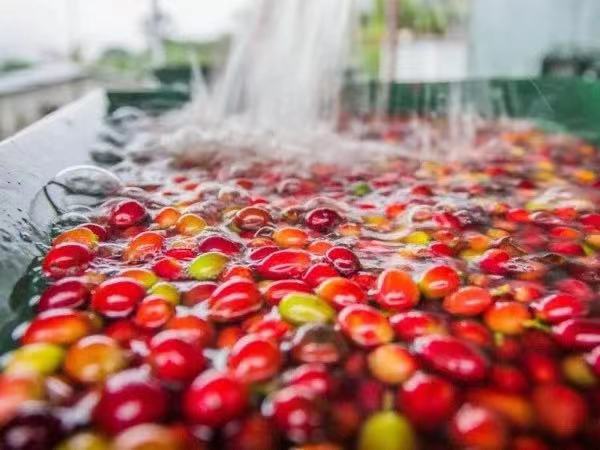
Sun treatment process
1. Harvest ripe coffee fruit
two。 Preliminary selection of impurities and inferior beans
3. Select floating beans: pour the coffee fruit into the sink, the ripe and full fruit will sink to the bottom of the sink, and the immature or incomplete fruit will surface.
4. Sun-drying: remove the ripe coffee fruit that sank at the bottom of the sink and spread it in the sun-drying field to reduce the moisture content from 70% to about 10-12%. Turn the fruit several times a day to dry evenly, and cover it at night to avoid moisture.
5. Remove the shell: after about two to four weeks of exposure, the outer layer of the coffee seed has been dry and hard, and then use a sheller to remove the shell.
6. Packaging and transportation: the shelled coffee beans will be packed in a bag, which is also what we generally call raw beans. Finally, after different roasting processes and brewing changes, it can show the taste changes of millions of kinds of coffee.
In fact, the difference between the two flavors is that the water washing treatment can present the basic flavor of a producing area, which is also the beginning of the understanding of the flavor of the producing area. The rule of sun treatment is to add sweet aroma and fermented feeling to this basic flavor.

Next, Qianjie will introduce to coffee fans the characteristics and flavor of all the Costa Rican coffee beans in Qianjie at present.
Front Street Costa Rican Mozart Coffee
Country: Costa Rica
Producing area: Tarazhu
Altitude: 1800m
Variety: Kaddura, Kaduai
Treatment method: raisin anaerobic honey treatment
Flavor: raisin sour berry blossom, fermented wine
As we all know, Mozart is a musician, so there must be coffee fans who ask Qianjie why coffee beans are named after musicians. In fact, it is because the owner of Carnett Manor loves classical music, so the coffee beans produced by the manor are named after musicians.
Carnet Manor is located at the highest altitude of Tarrazu coffee in Costa rica. The estate uses Kaddura and Kaduai coffee beans to do grape honey treatment and washing, producing world-famous musician series coffee beans. Under the name of "Beethoven", "Bach", "Chopin" and "Mozart", the elevation is between 1700m and 1950m. They are all SHB grade high altitude hard beans with sweet flavor. The aroma of fruit, wine and tea is strong.
Next, coffee fans must be curious about why this coffee bean is named Mozart instead of other musicians. According to Qianjie, this is because there is a saying: "Mozart, the prodigy of classical music." enjoy the gorgeous!
And this coffee is named Mozart because of its gorgeous aroma and flavor.
According to the understanding of the front street, the gorgeous fragrance refers to Mozart's elegant floral fragrance, white flower aroma like orange blossom, which can also be felt when brewing, while gorgeous taste means that Mozart coffee has more dark berries, raisins and traces of red berries, and the middle and latter part of the coffee can also feel the acid value of plums and the sweetness of bear fudge; it still retains the fragrance and sweetness when it is cold.
Costa Rican Bach Coffee on the front street
Country: Costa Rica
Producing area: Tarazhu
Altitude: 1950m
Variety: Kaddura
Treatment: raisin honey treatment
Flavor: fermented wine, berry fruit and tea notes
Bach's music is exquisite, rich and organized at the same time. So named Bach, dry aromas with strawberry, BlackBerry, raisins and other fruit aromas, cooking also waft fruit aromas. When it is just cooked, the aromas of flowers and fruit are obvious, and after the entrance, it also feels rich fruit aromas and sweet and sour feelings, with a slight wine aroma in the middle and back, like red wine. After cooling down, it has a sweet aroma of candied fruit, and the aroma of the wine is more obvious, and you can even feel the flavor of plum wine. Therefore, Qianjie thinks that every mouthful of Baja coffee seems to be in the splendor and rigor of baroque aesthetics.
Costa Rican Beethoven Coffee in Front Street
Country: Costa Rica
Producing area: Tarazhu
Altitude: 1800-1950 m
Variety: Kaddura, Kaduai
Treatment: washing treatment
Flavor: light fermented wine with citrus and berry floral aromas
Nothing is more famous for romantic classical music than Beethoven, and drinking coffee beans that will be associated with Beethoven music, its flavor naturally goes without saying, and the dry aroma has obvious red berries, of which strawberries are the most obvious and exude the smell of flowers. When cooking, you can feel the fragrance of flowers, nectar-like sweetness and green grapes. After the entrance of Beethoven coffee, there is a sweet and sour taste of green grapes and red berries, the whole is clean and smooth. The red berries will be more obvious when they are cold. Some coffee fans even say this is a kind of summer romantic coffee!
By the way, unlike musicians' other series of raisin honey treatments, Beethoven uses washing to treat coffee beans to achieve the clean and refreshing taste of summer. Therefore, Qianjie strongly recommends that coffee fans can drink this Beethoven coffee in summer.
In front of the street, Milasu Manor, Costa Rica, roses summer coffee.
Country: Costa Rica
Producing area: Tarazhu
Altitude: 1700 m
Variety: Rose summer
Treatment method: solarization treatment
Flavor: strawberry, peach, cinnamon, jasmine
According to Qianjie, it is known that the owner of Milasu Manor is a doctor of agriculture who is very good at treatment and post-position. later, he fulfilled his dream to set up his own farm and manor, and the farm planted many different varieties. Milasu sun rose summer has a light floral and light ripe fruit aroma. The tonality of black sugar and stone fruit brings a full sense of sweetness, so Qianjie believes that this is the first choice for an entry-level rose summer.
Front Street Costa Rica Fire Phoenix Sapphire Coffee

Country: Costa Rica Fiscal year: 2003
Production area: Central Canyon (Fire Phoenix Manor)
Altitude: 1300-1500m
Breeds: Kadura, Kaduai
Treatment method: sun treatment
Flavor: Strawberry, tropical fruit, mint, honey, cocoa, fermented aroma
Located in the foothills of the Poas volcano in the central Costa Rican valley, Fire Phoenix Manor is an early honey and sun coffee producer in Central and South America. It is an organically grown coffee estate. The owner believes organic farming is the best option for the environment and the health of his family, and despite many technical and organizational challenges, he continues to believe so.
Moreover, according to Qianjie, when picking coffee cherries, they will use Brix meter, which is often equipped in the wine industry, to measure the sugar content of the fruit. According to Brix sugar content, the best time and treatment method for harvesting will be determined. Only those with more than 20% sweetness will be exposed to sunlight. Brix values for general fruits are 14 for apples, 12 for lemons and 18 for passion fruits, but coffee cherries for fire phoenix can reach 21-22%.
The estate is also very environmentally friendly (column: rainwater harvesting for coffee) and uses earthworm farming (worm compost) to produce organic compost, making the planting process completely free of chemical fertilizers and pesticides. The natural processing of sapphire (Zahiro) is quite labor-intensive. Hand-harvested cherries with high sugar content are placed in African elevated sheds for about 10 days, and then placed in plastic covered greenhouses to create more direct heat and continue to dry until the moisture content reaches 11.5%. The slow drying process allows the beans to develop more natural sweetness from the inside, but it also requires more care and constant stirring. At the end, the red cherries turn black, giving off aromas of fruitcake, brown sugar and even sherry!
Front Street Costa Rica Lumei Sultan Coffee
Country: Costa Rica
Producing area: Lumei Valley
Altitude: 1250-1380m
Variety: Lumei Sultan
Treatment: washing treatment
Flavor: citrus, berries, oolong tea, sugar
The Sultan of Lumi, which was discovered in the Rumi Valley of the Boma Plateau near the Ethiopian border in southeastern South Sudan in the 1940s, is one of the native species of Arabica coffee and is also native to Ethiopia. This is an ancient wild coffee variety, and Lumi Sultan has a longer history than iron pickup and bourbon coffee in the coffee pedigree.
Qianjie read the information that Lumei Sultan is known to the coffee industry by the code name RS-510, with brass leaves as its main feature. When breeders need to create new coffee varieties, RS-510 is arguably the best Arabica provenance. For example, varieties with high yield and poor flavor can usually get varieties with good flavor and good yield when mixed with RS-510, because the flavor of RS-510 is extremely amazing, but the disease resistance is common and the yield is very low.
So mixing RS-510 with higher-yielding varieties allows coffee farmers to have new hybrids with high yield and disease resistance, and many well-known modern varieties, such as Castillo, Centroamericano, or Colombia, have been developed using this technique.
However, according to Qianjie, it is known that the yield of Lumi Sultan species is low, and it is relatively difficult to plant, which requires more care on a daily basis.
Therefore, in the past, few manors will carry out large-scale commercial cultivation, basically used for variety research and development, in order to get better plant disease resistance and coffee taste.
Until 2015, Sultan Lumi won the World Coffee Masters (WBC) championship in the hands of Australian representative Sasa Sestic. Overnight, Sultan Lumi became a kind of coffee beans that bakers and baristas competed with bakers for roasting and brewing.
In front of the street, Costa Rica Candle Manor Rose Summer Coffee
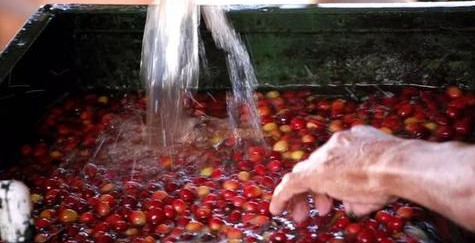
Country: Costa Rica
Producing area: small Candle Manor
Altitude: 1750 m
Variety: Rose summer
Treatment: washing treatment
Flavor: lemon, jasmine, honey, green tea
Candle Manor is the award-winning manor of CoE, Costa Rica. Costa Rican rose summer coffee beans are relatively young in the manor, but also because of different soil and water customs and microclimate, produce different Costa Rican rose summer coffee flavor, but also exquisite. The acid is rich and the tail rhyme is long. With distinct aromas of almonds, plums, citrus, sweet flowers and berries. La Candelilla, translated as "Little Candle", is named after the fireflies that light up a nearby stream on a summer night.
According to the Qianjie review, Little Candle Farm is run by Hugo and his daughter Marcia. They built it together in 2000, and their products are a mixture of Caturra and Catuai varieties from nine farms.
Small Candle Manor is also famous for producing the best Rosa coffee in the world. Since its inception in 2000, La Candelilla has been nominated for many awards.
Front Street Costa Rican Tarazu Coffee
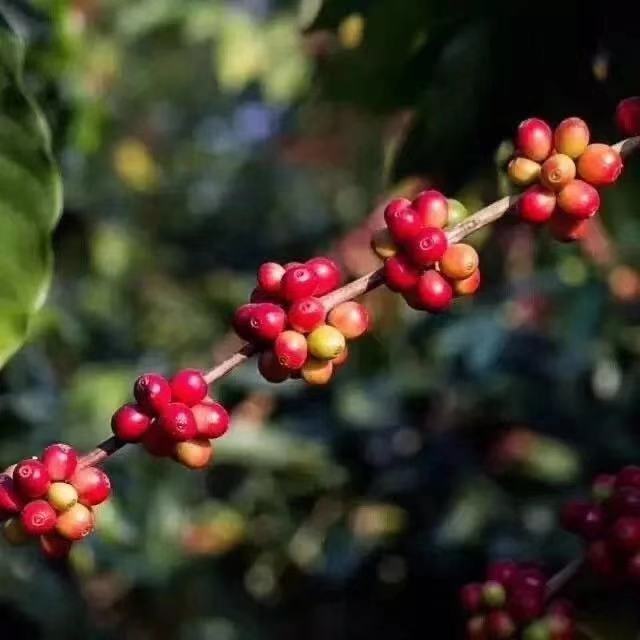
Country: Costa Rica
Producing area: Tarazhu
Altitude: 1950m
Variety: Kaddura
Treatment: washing
Flavor: orange, nut, honey
Tarazhu is very famous in the world of boutique coffee and is one of the major coffee producing areas in the world. In the 2014 COE competition, of the 23 beans on the list, 17 came from Tarazhu producing areas. Tarazhu is located in the fertile volcanic region of Central America, which has a humid climate and fertile volcanic soil, abundant rainfall throughout the year, high altitude, and dense forest natural shade, providing a unique growth environment for coffee growth. Pesticides or artificial fertilizers are not used in the planting process. Nearly 95% of the coffee beans produced in Tarazhu Alpine are very hard beans (SHB), which generally grow above 1500 meters above sea level.
Qianjie this Tara bead (rations beans) also fully explains the quality of Tarazhu coffee cherries. Through the cup test, Qianjie believes that this is a coffee bean that best represents the flavor of Costa Rican coffee. So coffee fans who want to know the flavor of Costa Rican coffee must try this coffee bean.
The above is some information about Costa Rican coffee organized by Qianjie, and I hope it can help coffee fans to have a deeper understanding of Costa Rican coffee.
For more boutique coffee beans, please add private Qianjie coffee on Wechat. WeChat account: kaixinguoguo0925
Important Notice :
前街咖啡 FrontStreet Coffee has moved to new addredd:
FrontStreet Coffee Address: 315,Donghua East Road,GuangZhou
Tel:020 38364473
- Prev
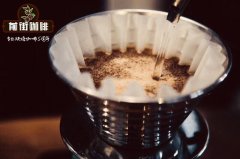
Guatemala Antigua Flavor Guatemala Antigua Coffee Bean Description Flavor Taste
Professional coffee knowledge exchange More coffee bean information Please pay attention to Coffee Workshop (Weixin Official Accounts cafe_style) Front Street-Introduction of Bella Carmona Manor in Antigua, Guatemala Bella Carmona Manor is located in Sacatepequez area of Antigua. It is an alliance estate composed of small estates. Here, three surrounding volcanoes, Agua, Fuego and Acatenango, serve as the
- Next

How about Costa Rican coffee? taste characteristics of Costa Rican honey treated coffee beans
Professional coffee knowledge exchange more coffee bean information please follow the coffee workshop (Wechat official account cafe_style) front street-Costa Rican gold Tarazu Red Honey introduction Ecological treatment Plant (BioCaf) is also Costa Rica this wave of micro-processing farm revolution in the birth of a family micro-coffee processing farm owned by Mr.Kenneth Madrigal in addition to processing its own gold
Related
- Detailed explanation of Jadeite planting Land in Panamanian Jadeite Manor introduction to the grading system of Jadeite competitive bidding, Red bid, Green bid and Rose Summer
- Story of Coffee planting in Brenka region of Costa Rica Stonehenge Manor anaerobic heavy honey treatment of flavor mouth
- What's on the barrel of Blue Mountain Coffee beans?
- Can American coffee also pull flowers? How to use hot American style to pull out a good-looking pattern?
- Can you make a cold extract with coffee beans? What is the right proportion for cold-extracted coffee formula?
- Indonesian PWN Gold Mandrine Coffee Origin Features Flavor How to Chong? Mandolin coffee is American.
- A brief introduction to the flavor characteristics of Brazilian yellow bourbon coffee beans
- What is the effect of different water quality on the flavor of cold-extracted coffee? What kind of water is best for brewing coffee?
- Why do you think of Rose Summer whenever you mention Panamanian coffee?
- Introduction to the characteristics of authentic blue mountain coffee bean producing areas? What is the CIB Coffee Authority in Jamaica?

